December 29, 2022 | 20:38 (GMT+7)
Reviving “bomb bag" of Vinh Linh
PANO - Vinh Linh district of Quang Tri province was called “bomb bag" during the resistance war against the U.S. imperialists.
Vinh Linh was the locality most fiercely suffering from the destructive war of the U.S. imperialists. According to statistics, on average, each resident in the district had “to stand” seven tons of bombs.
Although the war ended nearly half a decade ago, there are still a large amount of ammunition, bombs, and explosives under the ground in this area, threatening people’s lives. Therefore, mine clearance is paid special attention to before the construction of major projects.
The Bomb Detection Center under the Defense Industry Technical-Economic Corporation (GAET) is one of the military units that are striving to revive the "dead lands" in this giant “bomb bag.”
Below are photos of the efforts of the center’s troops in reviving "dead land" in Vinh Linh “bomb bag.”
    |
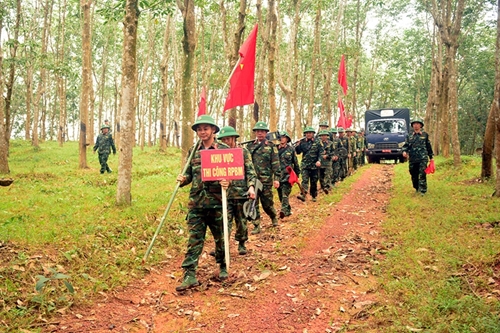 |
|
Troops of the Bomb Detection Center present at the scene early in the morning to start the work |
    |
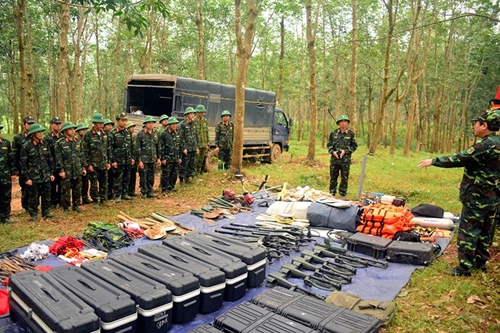 |
|
Detection devices gathered and checked |
    |
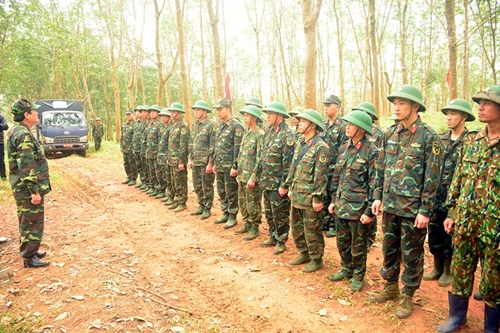 |
|
Troops briefed on their tasks and safety regulations |
    |
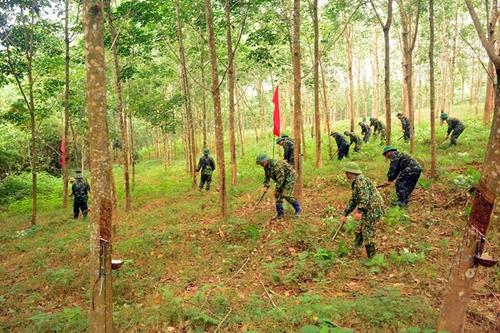 |
|
Before detecting UXO, troops clear bushes. |
    |
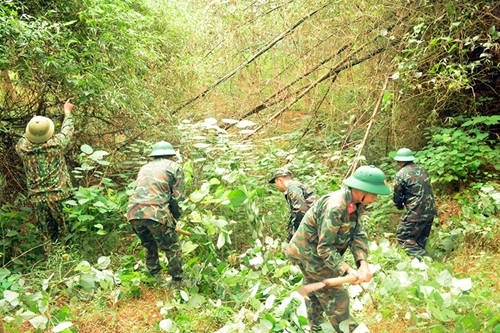 |
|
Clearing bushes is also a difficult task. |
    |
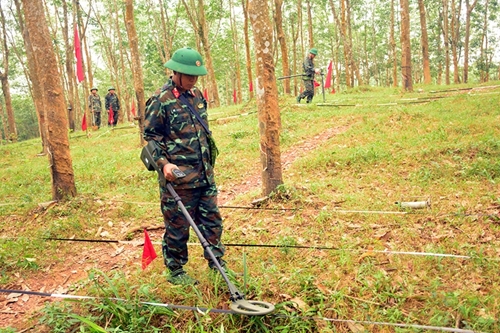 |
|
After the area is clear, troops use detectors to find shallow objects… |
    |
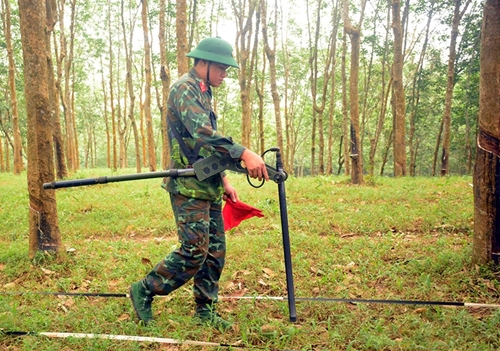 |
|
…then use depth detectors to look for mines buried around three meters underground |
    |
 |
|
Mine detectors operate within ranges. |
    |
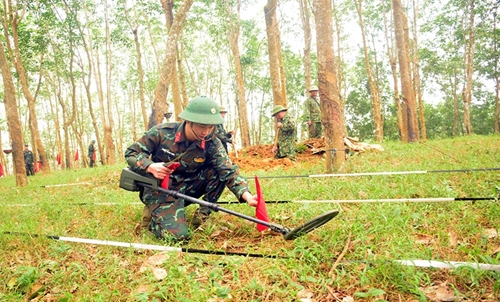 |
|
When an object is detected, the machine operator must plant a signal flag. |
    |
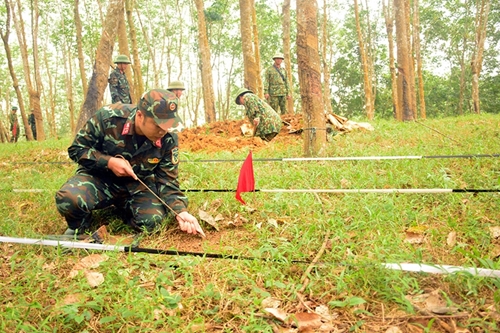 |
|
Using tools to determine the position and size of the metal |
    |
 |
|
Using a shovel or a knife to carefully dig up each layer of soil |
    |
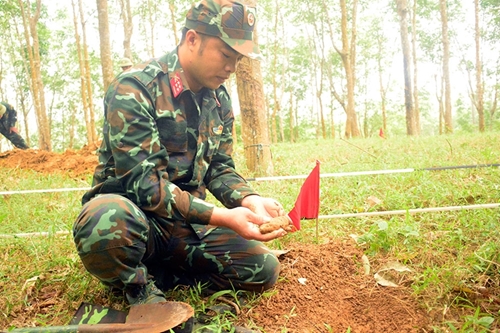 |
|
The found might be just a small object. |
    |
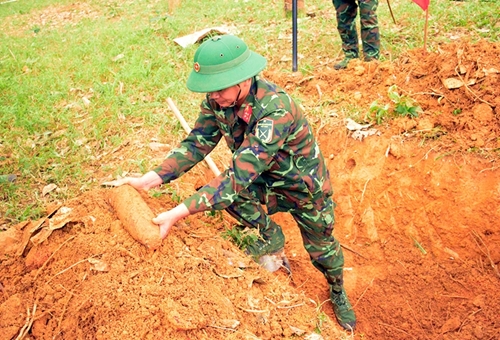 |
|
It could also be UXO or a large warhead. |
    |
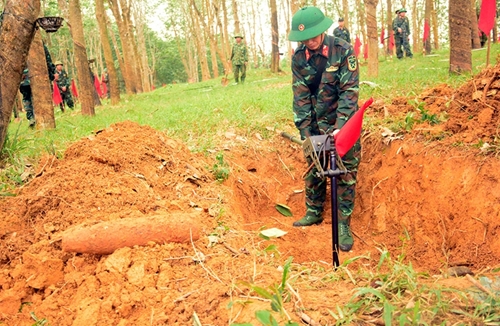 |
|
After the object is moved out of the scene, the detection continues. |
    |
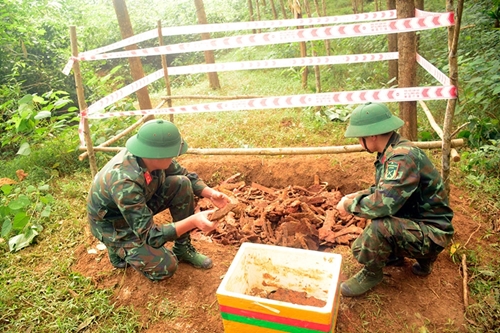 |
|
Harmless collected objects gathered |
    |
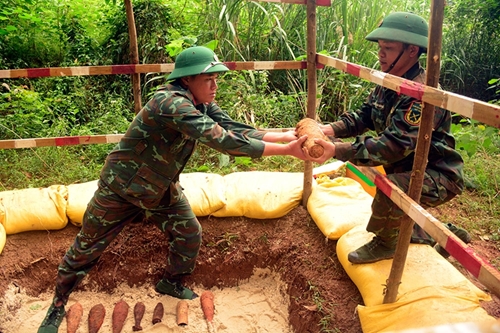 |
|
UXO moved to another place for defusing |
Translated by Song Anh